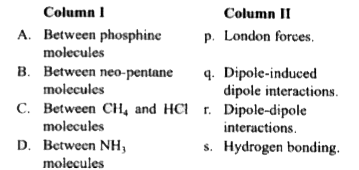Match column I with column II and select the correct option.
A - (i), B - (iii), C - (iv), D - (ii)
A - (ii), B - (iii), C - (iv), D - (i)
A - (i), B - (iv), C - (iii), D - (ii)
A - (ii), B - (iii), C - (i), D - (iv)
The correct Answer is:A
To solve the matching question, we need to identify the correct pairs between Column I and Column II based on the descriptions provided. Let's go through each item step by step.
1. Identify the Joint that Offers Maximum Movement:
- The joint that allows for the most movement is the Ball and Socket Joint. This type of joint can rotate in multiple directions, allowing for a full range of motion (360 degrees).
- Match: A (Joint that offers maximum movement) → (i) Ball and socket joint.
2. Identify the Tissues that Join Bones with Muscles:
- The tissues that connect muscles to bones are called Tendons. They are strong, fibrous tissues that ensure muscles are securely attached to bones.
- Match: B (Tissues that join bones with muscles) → (iii) Tendons.
3. Identify the Tissues that Join Two Bones:
- The tissues that connect two bones together are known as Ligaments. Ligaments are flexible and help stabilize joints while allowing for movement.
- Match: C (Tissues that join the two bones) → (iv) Ligaments.
4. Identify the Joint Present in Fingers:
- The joints found in the fingers are Hinge Joints. These joints allow movement in one direction, similar to the way a door opens and closes.
- Match: D (Joint present in fingers) → (ii) Hinge joint.
Final Matches:
- A → (i) Ball and socket joint
- B → (iii) Tendons
- C → (iv) Ligaments
- D → (ii) Hinge joint
Conclusion:
The correct option is:
- A matches with i
- B matches with iii
- C matches with iv
- D matches with ii
- The joint that allows for the most movement is the Ball and Socket Joint. This type of joint can rotate in multiple directions, allowing for a full range of motion (360 degrees).
- Match: A (Joint that offers maximum movement) → (i) Ball and socket joint.
- The tissues that connect muscles to bones are called Tendons. They are strong, fibrous tissues that ensure muscles are securely attached to bones.
- Match: B (Tissues that join bones with muscles) → (iii) Tendons.
- The tissues that connect two bones together are known as Ligaments. Ligaments are flexible and help stabilize joints while allowing for movement.
- Match: C (Tissues that join the two bones) → (iv) Ligaments.
- The joints found in the fingers are Hinge Joints. These joints allow movement in one direction, similar to the way a door opens and closes.
- Match: D (Joint present in fingers) → (ii) Hinge joint.
- A → (i) Ball and socket joint
- B → (iii) Tendons
- C → (iv) Ligaments
- D → (ii) Hinge joint
The correct option is:
- A matches with i
- B matches with iii
- C matches with iv
- D matches with ii
Topper's Solved these Questions
- BOOK - MTG IIT JEE FOUNDATIONCHAPTER - BODY MOVEMENTSEXERCISE - EXERCISE - FILL IN THE BLANKS10videos
BODY MOVEMENTS
- BOOK - MTG IIT JEE FOUNDATIONCHAPTER - BODY MOVEMENTSEXERCISE - EXERCISE - TRUE OR FALSE10videos
BODY MOVEMENTS
- BOOK - MTG IIT JEE FOUNDATIONCHAPTER - BODY MOVEMENTSEXERCISE - NCERT SECTION13videos
BODY MOVEMENTS
- BOOK - MTG IIT JEE FOUNDATIONCHAPTER - AIR AROUND US EXERCISE - OLYMPIAD/HOTS CORNER10videos
AIR AROUND US
- BOOK - MTG IIT JEE FOUNDATIONCHAPTER - COMPONENTS OF FOOD EXERCISE - OLYMPAID/HOTS CORNER9videos
COMPONENTS OF FOOD
Similar Questions
Knowledge Check
- Question 1 - Select One
Match the column I with column II and select the correct option.
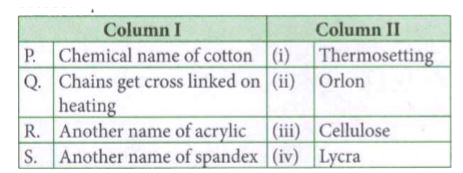 AP-(iv), Q-(ii), R-(i), S-(iii)BP-(iii), Q-(i), R-(ii), S-(iv)CP-(iv). Q-(i), R-(iii), S-(ii)DP-(iii), Q-(ii), R-(i), S-(iv)
AP-(iv), Q-(ii), R-(i), S-(iii)BP-(iii), Q-(i), R-(ii), S-(iv)CP-(iv). Q-(i), R-(iii), S-(ii)DP-(iii), Q-(ii), R-(i), S-(iv) - Question 2 - Select One
Match the column I with column II and select the correct option.
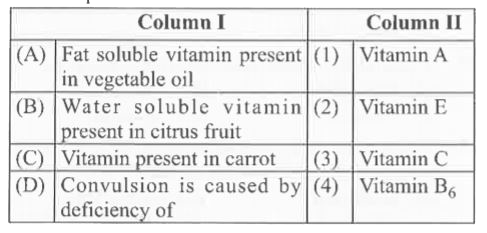 AA-(3),B-(l),C-(2),D-(4)BA-(l),B-(3),C-(4),D-(2)CA-(2),B-(3),C-(l),D-(4)DA-(l), B-(2), C-(3), D-(4)
AA-(3),B-(l),C-(2),D-(4)BA-(l),B-(3),C-(4),D-(2)CA-(2),B-(3),C-(l),D-(4)DA-(l), B-(2), C-(3), D-(4) - Question 3 - Select One
Match the column I with column II and select the correct option
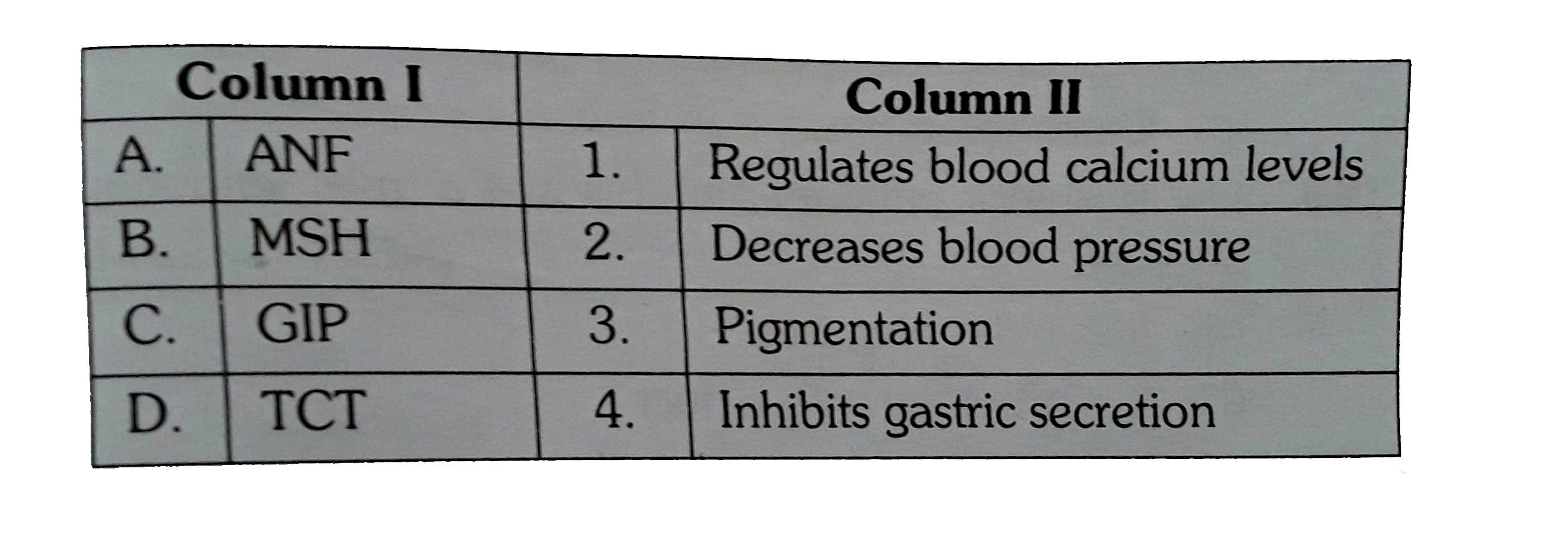 AA-4, B-1, C-2, D-3BA-2, B-1, C-4, D-3CA-3, B-2, C-4, D-1DA-2, B-3, C-4, D-1
AA-4, B-1, C-2, D-3BA-2, B-1, C-4, D-3CA-3, B-2, C-4, D-1DA-2, B-3, C-4, D-1
Match the column I with column II and select a correct option.
 View Solution
View SolutionMatch the Column I with Column II and select the correct option.
 View Solution
View SolutionMatch the Column I with Column II and select the correct option :
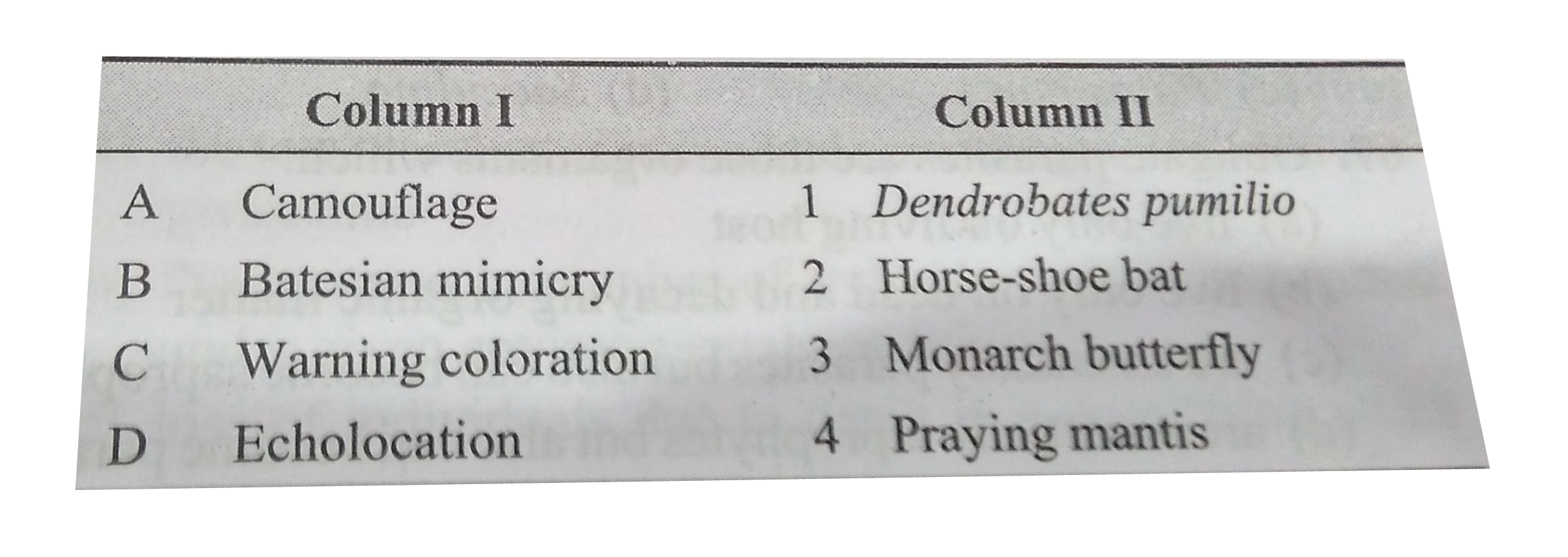 View Solution
View SolutionMatch the Column I with Column II and select the correct option.
 View Solution
View SolutionMatch the Column I with Column II and select the correct option.
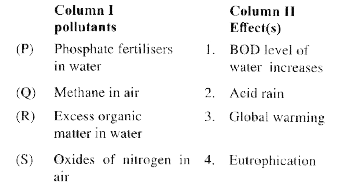 View Solution
View Solution



